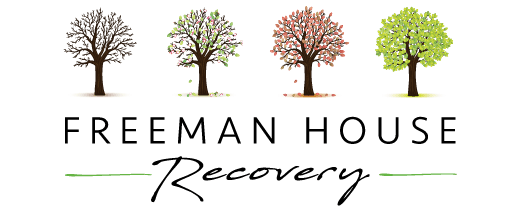Medical Origins and Approved Uses
Development as an anaesthetic
Ketamine was first developed in the mid-20th century to serve as a safer alternative to existing surgical anaesthetics. Unlike other agents that could depress breathing, ketamine allowed patients to maintain their airway reflexes while entering a dissociative state. Surgeons found it especially useful in field hospitals and emergency situations, where resources were limited but safe sedation was essential. Its rapid onset and relatively short duration made it a staple in trauma care, reducing risks during critical procedures.
Clinical applications in pain management
Beyond its role in surgery, ketamine found a place in pain clinics for patients suffering severe or chronic pain. Low-dose infusions offered relief when opioids failed or when tolerance had developed. Clinicians noted that ketamine could break cycles of persistent pain by affecting certain receptors in the spinal cord and brain. In controlled settings, with careful monitoring of heart rate and blood pressure, patients reported significant improvements in mobility and comfort. This therapeutic value under medical supervision contrasts sharply with patterns seen in unregulated use.
Transition to Illicit Circulation
Diversion from medical supply
Despite strict controls, some medical stocks of ketamine have been siphoned off before reaching clinics and hospitals. In some cases, paperwork is altered or small amounts diverted during routine handling. Veterinary practices have also reported losses, as ketamine remains a vital sedative for large animals. Once in illicit hands, the substance can be repackaged into vials or pills and sold at a premium. The gap between legal distribution and street supply underlines how diversion becomes the first step toward recreational misuse.
Growth in recreational markets
Club promoters and festival dealers spotted an opportunity in ketamine’s distinctive effects. By offering it alongside more common party drugs, they tapped into a market seeking fresh experiences. Vials bearing simple logos began to appear at music events, making it feel like a branded product rather than an illicit chemical. As festival season peaked, health tents saw an uptick in cases of overuse, prompting event organisers to brief staff on recognising ketamine’s unique signs. What started as a niche addition to nightlife soon became a mainstream item in certain scenes.
Patterns of Recreational Misuse
Use in nightlife and festivals
In urban club nights, ketamine often appears in small doses that users snort or inject. Its rapid effect can leave someone feeling detached for a short period before normal consciousness returns. This makes it attractive for those who want an intense but brief break from reality. Festival goers sometimes take repeated doses over several hours to sustain that dissociative state under flashing lights and loud music. Medical volunteers report that dehydration and overheating are common when users fail to notice how much time has passed.
Home based self administration
As knowledge of ketamine spread online, some users began experimenting at home. Guides shared in private forums offer simple steps to measure a dose, though these methods lack standardisation and may lead to overdoses. Without medical supervision, users can mix ketamine with alcohol or other drugs, unaware of potential interactions that increase risk. Cases of accidental injury rise when people try to move around while in a dissociated state, often resulting in falls or collisions with furniture.
Drivers Behind Non Medical Use
Desire for mind altering effect
Many first-time users describe ketamine’s effect as a brief escape from stress. In controlled doses, it can induce a dreamlike experience that feels unlike stimulants or depressants. This novelty draws curiosity among people who have tried more common substances. Some see it as a tool to manage anxiety or sleeplessness, though self-medicating without guidance can quickly backfire. The initial sense of control gives way to dependency when users chase the same dissociative state repeatedly.
Influence of social networks
Social media platforms and private messaging groups play a key role in spreading ketamine use. Users share tips on sourcing and dosing, lending a sense of trust to unverified information. When friends post images of party vials or describe hangover-free highs, peers feel encouraged to try it themselves. This peer validation makes stepping into ketamine use seem routine rather than risky. As online chatter ramps up, casual experimentation can turn into a regular habit before users realise the full impact.
Professional Misuse Trends
Access in healthcare settings
Some healthcare workers with legitimate access to ketamine have been found diverting supplies for personal use. While most professionals adhere to strict protocols, a small number take advantage of their position. This misuse poses serious ethical concerns and can leave clinics understocked for genuine patients. Regulatory bodies conduct audits and random checks, but the clandestine nature of diversion makes it hard to eliminate completely.
Effects on work performance
When medical staff or other professionals misuse ketamine, their duties can suffer. Impaired memory and reduced focus may lead to errors in judgment or delayed responses in emergencies. Hospitals and clinics have policies for random drug testing and peer reporting to catch issues early. Yet some users manage to conceal their problem until it affects team morale or patient safety. Addressing misuse among professionals requires both strict oversight and support systems that encourage individuals to seek help without fear of losing their career.
Health Hazards of Unsupervised Use
Organ damage and physical strain
Regular ketamine misuse can harm multiple organs. Bladder inflammation and ulcerations arise when the compound irritates the lining over time, causing painful spasms and urgency. In severe cases, users require surgery to repair or remove damaged tissue. Liver enzymes can spike with frequent use, hinting at potential liver stress or damage. These physical strains often lead individuals to emergency departments, sometimes with life-altering injuries.
Mental health and cognitive decline
Extended ketamine use alters brain chemistry, leading to memory issues and mood instability. Users may find it hard to retain new information or concentrate on tasks. Mood swings become more intense, with abrupt shifts from calm to anxious states. Psychotic symptoms can appear in a minority of frequent users, prompting psychiatric intervention. Even after stopping, some individuals report lingering cognitive fog and emotional volatility that can persist for months or longer.
Policy and Enforcement Issues
Gaps in regulation
While ketamine is controlled in medical contexts, recreational laws struggle to keep pace with new distribution methods. Small postal deliveries often fly under the radar, and encrypted platforms hide transactions from authorities. Law makers debate stricter import controls and harsher penalties for diversion, but critics argue that more focus should go to education and treatment rather than punishment alone.
Penalties and law enforcement
Possession of ketamine without a licence can result in several years of imprisonment and fines. Supply offences carry even heavier sentences. Yet law enforcement faces practical challenges in identifying users versus casual carriers. Roadside drug tests rarely detect dissociative anaesthetics, so police rely on intelligence from event surveillance and postal interceptions. Collaborative efforts between health services and police aim to target larger suppliers while guiding low-level offenders toward support services.
Recovery and Support Routes
Medically supervised detox and therapy
Safe withdrawal from ketamine often requires a controlled environment where symptoms can be monitored. Once acute symptoms ease, structured therapy tackles the emotional drivers of misuse. Cognitive sessions help individuals recognise patterns and build new habits. Group meetings offer peer encouragement, reminding participants they are not alone in facing their challenges.
Ongoing care and community resources
Long-term recovery depends on ongoing support. Many find value in rehabilitation programmes that combine counselling, life skills workshops and peer networks. These services guide users through rebuilding routines and relationships strained by misuse. Community centres and online forums provide safe spaces to share progress and setbacks. Continued check-ins, whether in person or via digital platforms, help maintain focus on recovery goals without shame or judgement.
Areas Needing Further Study
Improved data tracking
Current knowledge of ketamine misuse relies on hospital records and self-reported surveys, which may undercount cases. Establishing standard reporting across clinics and outreach services would give a clearer picture of trends. Better data can inform funding decisions for prevention, treatment and research initiatives.
Development of targeted programmes
Evidence on effective prevention and recovery strategies remains limited. Researchers and policy makers must pilot programmes designed for specific groups, such as students or healthcare workers. Evaluating outcomes over time will show which approaches yield lasting change. Investing in tailored support, based on robust data, can ensure that resources make a real difference where it matters most.










